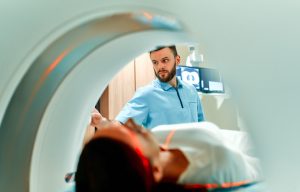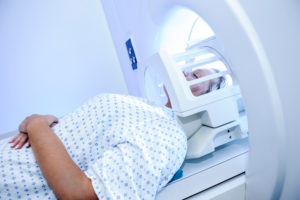Vertebral Motion Analysis
Vertebral motion analysis (VMA) is an imaging technique that uses X-ray technology to create a video of the spine in real-time. This information allows a radiologist to discover injuries in the neck or back that could otherwise go undetected. Unlike static diagnosis images, like X-ray or MRI, VMA uses a device that can examine the spine in real-time.
The spine is an extremely important part of the body, and it is also very complex. Spine conditions including herniated disc degeneration and arthritis can develop due to age and injury, causing problems up and down the neck and back.
In some cases, a physician looking at a static MRI or X-ray may see multiple issues that could be the source of pain. By being able to take a moving image, doctors can see how certain movements affect the joints and discs in the spine while patients report whether or not they are experiencing pain.
The Benefits of Using Vertebral Motion Analysis
The spine is a very important body part, but it is also highly complex. In order to perform multiple functions, including supporting the upper body, protecting the central nervous system, and allowing for basic movement, the spine is made of many interconnected parts. Spine conditions including herniated and bulging discs and arthritis can develop due to age and injury, causing problems up and down the neck and back.
There are various reasons why a medical professional might choose to use vertebral motion analysis instead of alternative procedures. Some of the benefits of VMA includes:
- Controlled motion
- Reduced radiation setting
- Less total radiation
- Stabilization and detailed views
- Quantified output
- Extensive data
- Often covered by insurers
What to Expect During a VMA Procedure
The first step of vertebral motion analysis involves the patient entering the machine, which is a large standard imaging device with mechanical arms attached. Next, the patient is guided by the machine through a number of spinal movements that are recorded by the technician. This form of medical imagery does not cause patients pain, but the patient does have the option to pause the procedure if they feel any discomfort.
After this, the imagery is tested by a computer program that performs measurements designed to deliver a more accurate movement-based diagnosis. If you have experienced severe pain in your back, VMA could be a great option to find the root cause of your discomfort.
Vertebral Motion Analysis Cost
The cost of vertebral motion analysis can vary depending on factors such as insurance coverage. BEST Health System accepts Medicare, most private insurance carriers, workers’ compensation claims, and personal injury cases. Contact BEST Health System and see if you are a potential candidate for radiofrequency ablation or alternative procedures.
If neck or back pain related to a spine condition is taking you away from the people and activities you love, receiving a proper diagnosis should be the first step on your treatment journey. The highly skilled surgeons at BEST Health System utilize the latest advances in both the diagnosis and treatment of common spine conditions. To learn more, contact our caring and dedicated team today.
Procedure Doctors
Related Articles
We are BEST Health System
BEST Health System – The Modern Ambulatory Center Offering Advanced Surgical Care BEST Health System is a modern ambulatory center offering advanced surgical care for […]
Your Complete Guide to Medical Imaging
The Importance of Medical Imaging for Diagnostic Purposes Medical imaging plays a pivotal role in modern healthcare, enabling accurate and efficient diagnostics that have the […]
From X-Rays to MRIs - A Guide to Imaging Technology
What is Medical Imaging Technology? Medical imaging refers to the sophisticated technology used to capture internal images of the body’s structures. This is incredibly important […]
What Everyone Needs To Know About MRI Testing
Magnetic resonance imaging or MRI is a non-invasive procedure that provides a high-resolution image of the interior of the body. It is similar to an […]
Everything You Need to Know About X-Rays for Back Pain | BEST
If you’ve turned to a physician for help with your back pain, it is likely that your pain has progressed to the point where it […]
Do I Need a CT Scan for a Back Pain Diagnosis? | BEST
A CT (computed tomography) scan is one of the most commonly used tests for diagnosing back and neck pain. This test is painless, noninvasive, and […]
Do I Need an MRI Scan for a Back Pain Diagnosis? | BEST 
Magnetic resonance imaging, commonly known as an MRI, is one type of scan that can be used for diagnosing back pain. The images produced by […]
Muscle Strain, or More Serious Injury? How To Find Out | BEST
Developing muscle strain is extremely common. In fact, everyone encounters this minor injury at some point or another in their lives. Whether you overdo a […]
Let’s Talk About Laserdisc Compression Procedures | BEST
Laserdisc procedures, or laser disc decompression, is a term that can encompass multiple procedures. Any laser disc decompression uses laser assistance to remove damaged spinal […]








